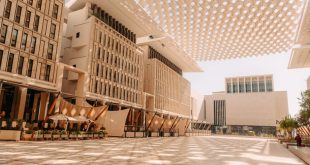 -Editorial
-Editorial
A new report released by the World Travel & Tourism Council (WTTC) in partnership with air transport technology company SITA suggests that modernizing global border management systems through digital innovation could deliver a major economic boost by 2035. The Better Borders report estimates that smarter borders could generate an additional $401 billion in global GDP and create 14 million new jobs across G20, European Union, and African Union member nations.
According to the report, the Travel & Tourism sector is forecast to reach $16.5 trillion in global GDP by 2035, accounting for 12.5% of the world’s total workforce. WTTC and SITA argue that border modernization is now a strategic imperative for governments seeking to enhance competitiveness, strengthen security, and improve the traveler experience.
The Better Borders report presents six guiding principles and 18 recommended actions aimed at creating a more seamless and secure international travel system. Among its top recommendations, it calls for the full digitalization of visa and travel authorization processes, adoption of biometric and digital identity systems, and enhanced coordination among tourism, security, and finance ministries. The report also encourages pre-clearance of travelers before arrival to reduce congestion, and the creation of direct digital communication channels with travelers to increase transparency and trust.
WTTC Interim CEO Gloria Guevara said that advances in digital identity verification and biometric technologies are transforming what is possible at national borders. “Technology now allows us to achieve what was once thought impossible: stronger borders and smoother travel,” Guevara said. “By embracing digital identities, biometrics, and advanced data systems, countries can make journeys faster and more secure at the same time. The solutions are already here. Governments that take action today will see clear benefits tomorrow—from safer borders and greater traveler confidence to increased visitor numbers and economic growth.”
Pedro Alves, Senior Vice President for Border Solutions at SITA, emphasized the need for governments to create dynamic and integrated systems capable of adapting to global challenges in real time. “Borders today must be dynamic, integrated, and seamless,” Alves said. “That means connecting agencies around a shared view of the traveler and delivering the seamless experience people expect. At the heart of this transformation is data—the ability to trust the identity data that drives every decision. When governments can rely on high-quality data, they can move faster, act earlier, and focus resources better. That’s not just good for national security. It’s essential for tourism, trade, and the traveler experience.”
The report highlights successful examples of digital border modernization already underway in countries such as the United States, the United Arab Emirates, and Australia. In the U.S., Customs and Border Protection (CBP) has implemented biometric facial comparison technology at 238 airports, including all 14 CBP pre-clearance locations and 57 departure points for international travelers. The system has expedited processing and strengthened identity verification for millions of passengers.
In the UAE, the integration of artificial intelligence has significantly reduced visa processing times, cutting some wait periods to just hours. AI-powered systems also assist travelers in accurately completing visa applications, minimizing administrative errors and improving efficiency. Meanwhile, Australia’s airports have widely adopted SmartGate technology, which uses facial recognition to streamline arrivals and departures. As of June 2025, 79% of all arrivals were eligible to use SmartGates, with about three-quarters choosing to do so—resulting in reduced wait times and smoother passenger flow.
The WTTC report notes that travelers themselves are increasingly supportive of these innovations. According to survey data, 75% of travelers prefer biometric screening over manual procedures, and 85% are willing to share personal data in advance if it means faster, more efficient processing.
WTTC and SITA conclude that governments have an opportunity to turn borders into strategic national assets by embracing technology and data-driven decision-making. The organizations argue that “Better Borders” can balance the dual priorities of security and convenience, producing long-term economic, social, and reputational gains.


